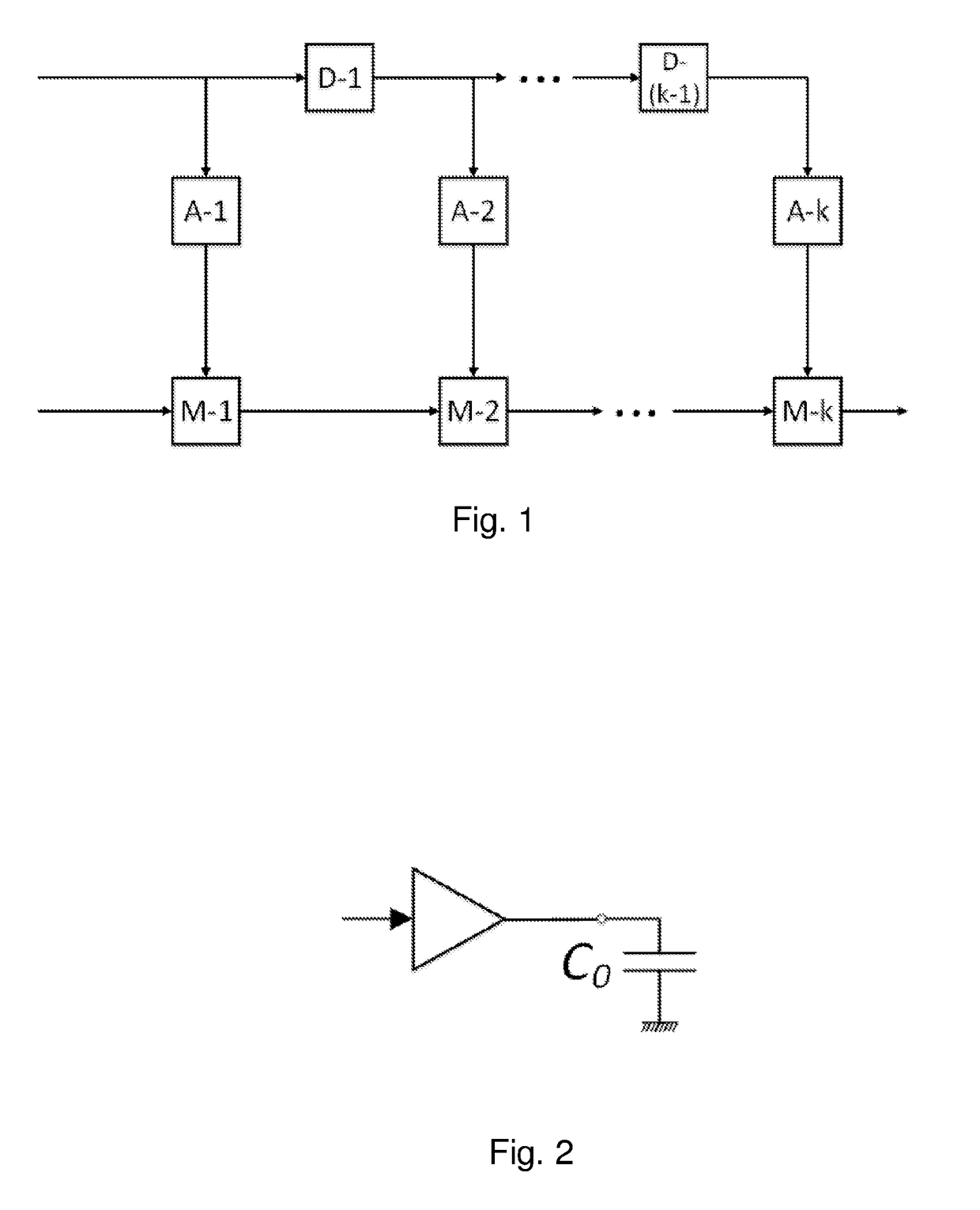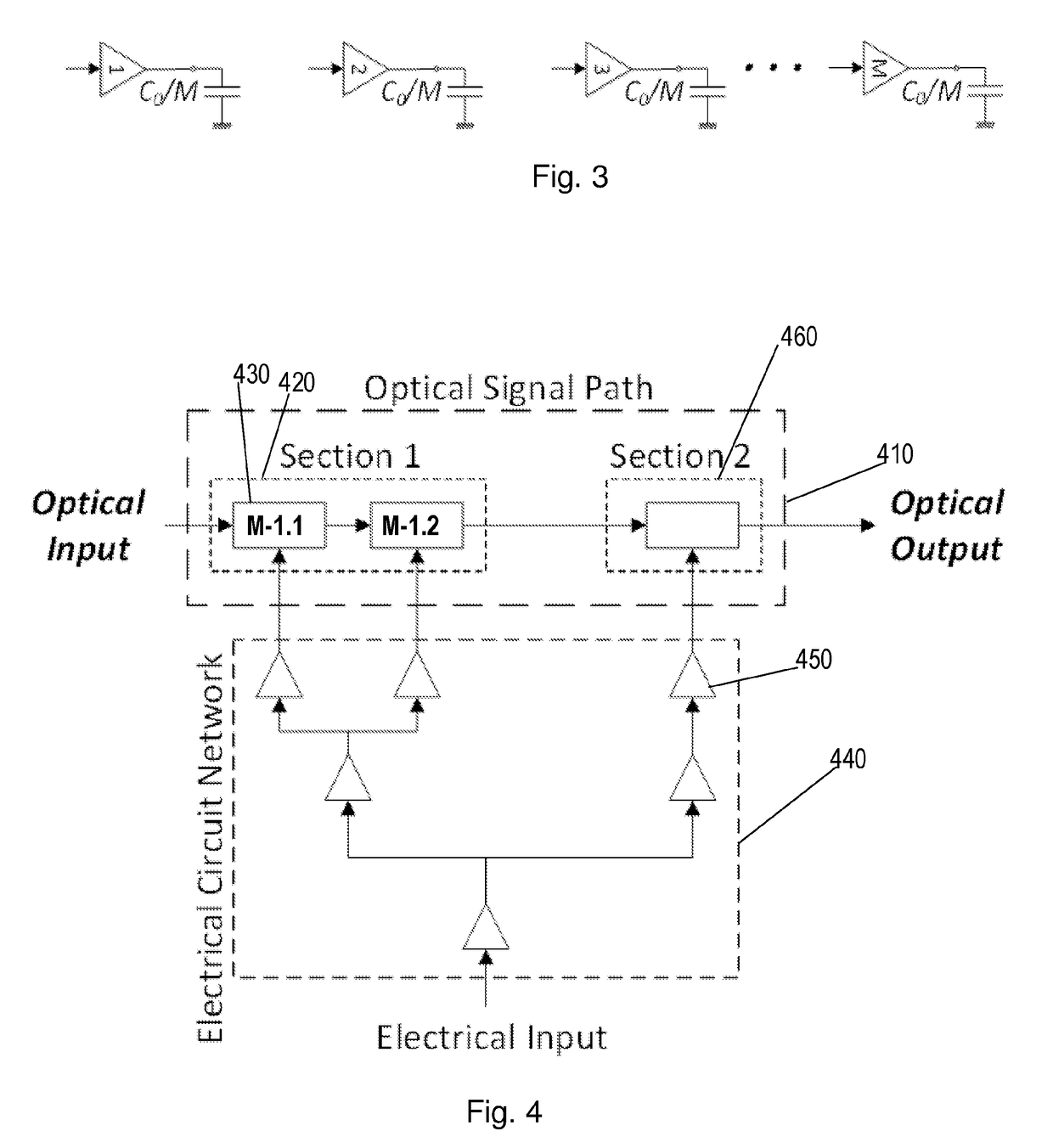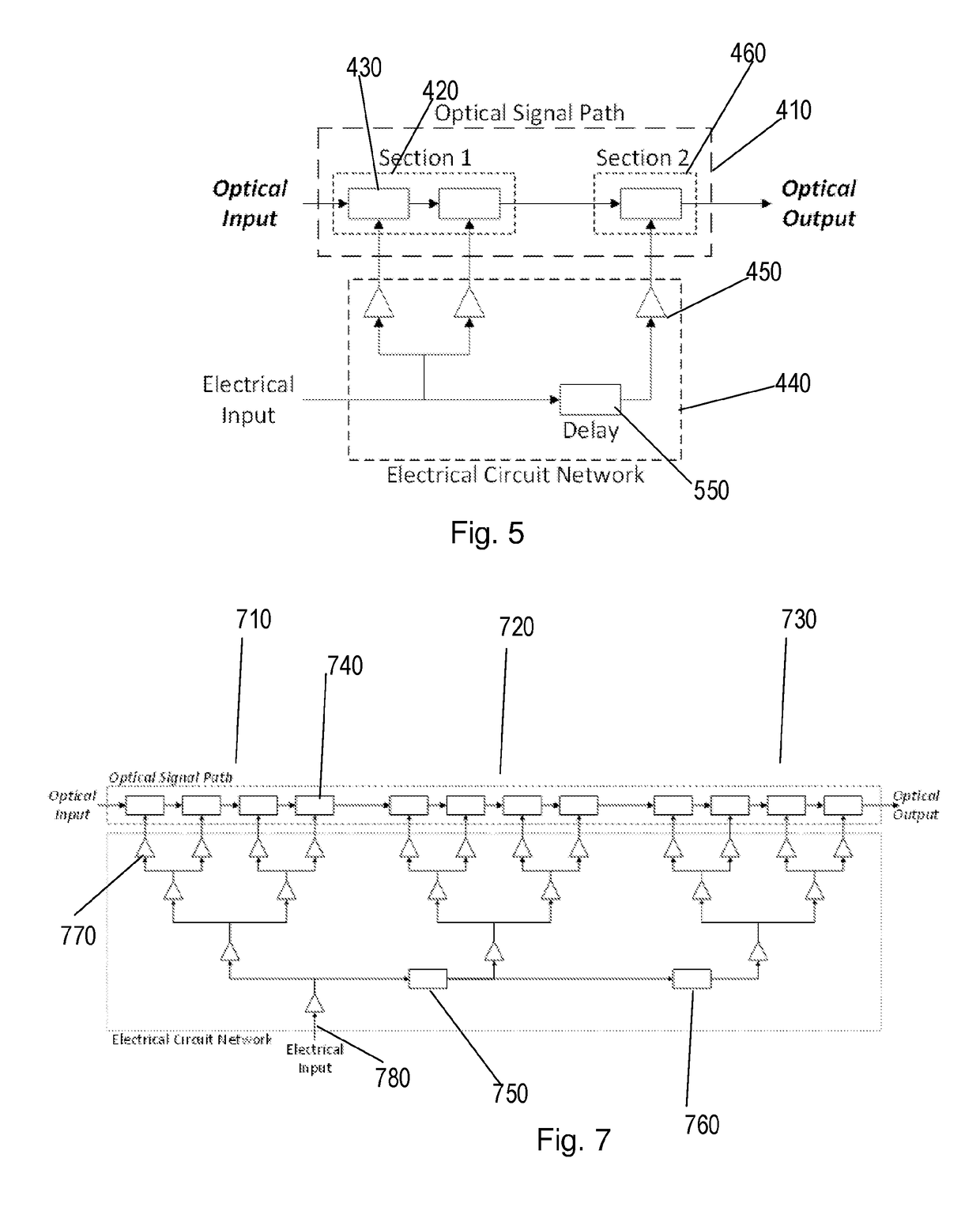An optical apparatus
a technology of optical apparatus and optical modulator, applied in the field of optical modulators, can solve the problems of inherently lossless process of guiding optical signals (light) through dielectric structures, almost non-existent thermal noise, and mainly observed loss in practice, so as to achieve extremely energy-efficient high-speed optical modulators, enhance energy efficiency, and reduce the capacitance of each individual element.
- Summary
- Abstract
- Description
- Claims
- Application Information
AI Technical Summary
Benefits of technology
Problems solved by technology
Method used
Image
Examples
Embodiment Construction
[0196]The invention will be described in respect of general theory of the invention first and then will be described in respect of various preferred embodiments.
[0197]The group velocity limited bandwidth (BW) of a traveling wave optical modulator is given by the following approximate relation [1],
BW≃1.4cπLng-nRF
in which BW is the modulator bandwidth in hertz (Hz), c is the vacuum speed of light, L is the interaction length of the modulator (the length along which optical and RF fields travel together), ng is the group index of the optical field and nRF is the group index of the RF field, which are related to the propagation velocities of the optical (vg) and RF (vRF) fields, through following relations,
vg=c / ng
and
vRF=c / nRF.
[0198]As it is evident, in order to obtain wideband operation (large values of BW), one should either decrease the length L or bring the values of ng and nRF close to each other.
[0199]To get better understanding, two examples are considered below.
[0200]Modulators ...
PUM
| Property | Measurement | Unit |
|---|---|---|
| time delay | aaaaa | aaaaa |
| time-of-flight | aaaaa | aaaaa |
| electrical | aaaaa | aaaaa |
Abstract
Description
Claims
Application Information
 Login to View More
Login to View More - R&D
- Intellectual Property
- Life Sciences
- Materials
- Tech Scout
- Unparalleled Data Quality
- Higher Quality Content
- 60% Fewer Hallucinations
Browse by: Latest US Patents, China's latest patents, Technical Efficacy Thesaurus, Application Domain, Technology Topic, Popular Technical Reports.
© 2025 PatSnap. All rights reserved.Legal|Privacy policy|Modern Slavery Act Transparency Statement|Sitemap|About US| Contact US: help@patsnap.com



